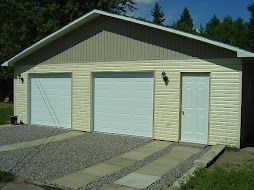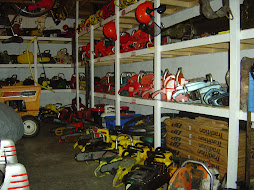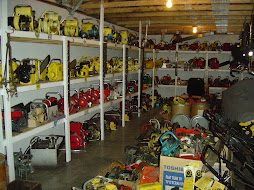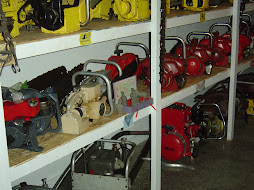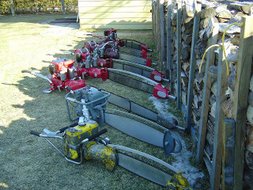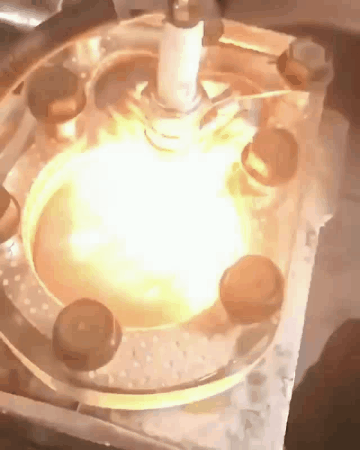






FABRICATED BY: MOTOR UNION, KAPLICE, CZECHOSLOVAKIA.
MODEL: BD-1S68-A (RP50)
Made in ČSSR - type: BD 1S68-A- ; fabric mark - 06 ; production year - 1953; engine - one cylinder, capacity - 248 ccm, bore - 68 mm, stroke - 68 mm ; power - 5,5 hp; engine weight - 20,75 kg ; cutting the length and weight - 600 mm/17,25 kg; 800 mm/19,25 kg; 1000 mm/21,25 kg; tank capacity - 2,5 l ; max speed engine - 3800 rev/min
NOTE: A copy of the Stihl KS 43-BD1S
All these types of saws were gradually supplemented and then replaced relatively quickly two-man chainsaw MP-50506 domestic production. It belonged at that time still saw the MP-50 to the best saws in its category in Europe. It had a standing two-stroke single cylinder with a bore and a stroke of 68 mm, volume 248 cm3 and 5.5 hp (4 kW) at 3,800 rpm. It was equipped with a decompression valve for easier starting and stopping of the saw. The circumferential speed of the chain reached 7 m / s, the cutting joint was 8 mm wide. The saw had a gradient petrol tank, Jikov 2920 PS float carburetor, 2.5 l petrol tank, oil tank 0.5 l, automatic chain lubrication with gear pump. Together with a bar with a length of 600, 800 or 1,000 mm weighed 38, 40 and 42 kg, respectively. The cylinder was aluminum with a cast iron insert, gear the ratio between the motor and the chain was 3.2: 1 and the clutch was centrifugal. Starting flat the belt did not have automatic rewinding.
A saw equipped with a float carburetor could not be tilted, if necessary therefore, only the bar tilted. The design of the MP-50 allowed three positions of the bar: vertical for cross-sectional cuts; horizontal for felling; oblique for cutting jams (alternatively 30 ° or 45 ° from the horizontal). The cutting chains of the time were not adapted for oblique cutting, and so the saw had to be pushed into the oblique cut by force, so it was an unpopular execution oblique cuts necessary when creating a jam. Changing the position of the felling and cross-section bar was only possible with the chain standing, which complicated and delayed the work. This was one of the reasons why the trees up to 20 cm on the stump were felled without a jam, only the third member of the group pushed them in the direction of the fall of the poles. Trees with a thickness on the stump of 20–30 cm were cut after a previous horizontal cut with a saw instead of a jam, and for trees thicker than 30 cm on a stump, two cuts were made with a saw against the future main section, spaced vertically 3-4 cm. Sometimes the space between the notches protruded with an ax or thicker trees were felled with a jam made by an ax.




